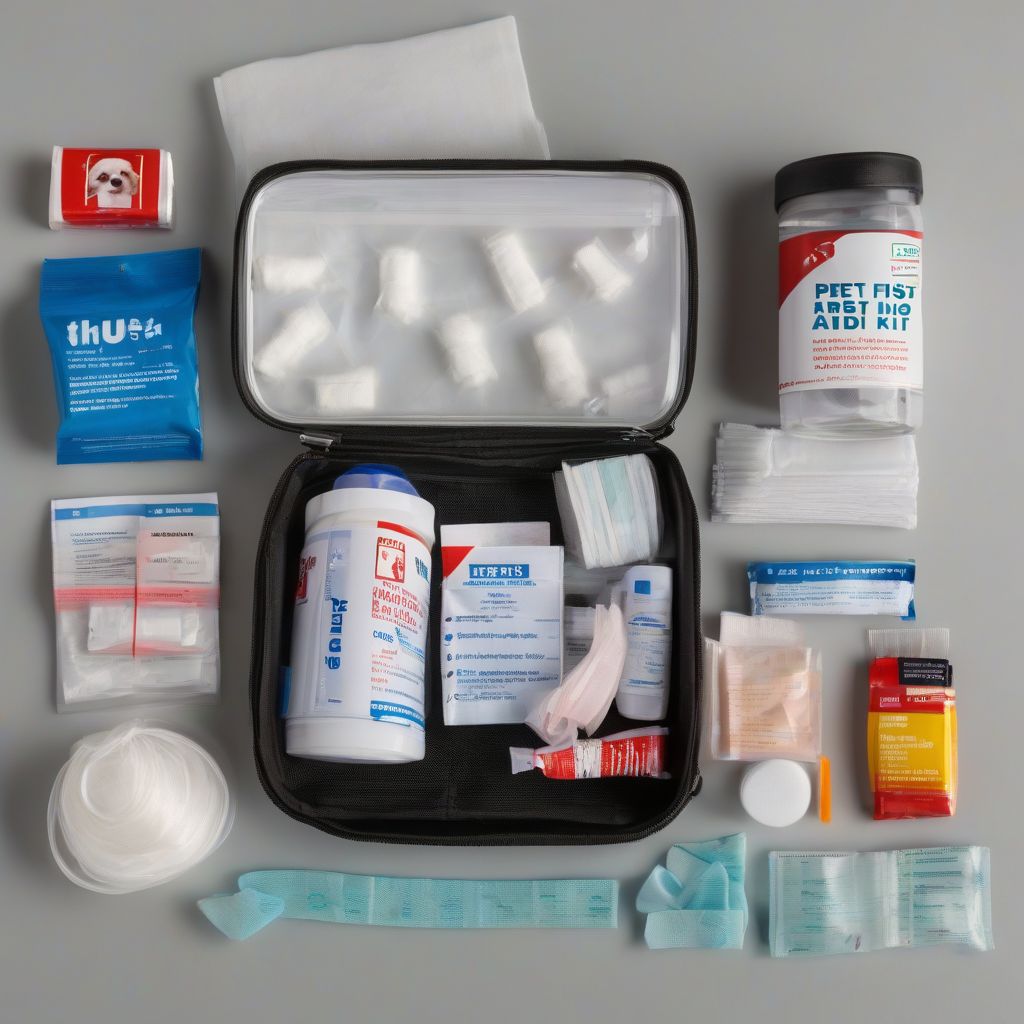Imagine this: You’re enjoying a sunny afternoon at the park with your beloved dog, Max. Suddenly, he lets out a yelp, holding his paw in the air. Panic sets in as you realize he’s stepped on something sharp. Would you know what to do in that moment?
As a nutritionist and meal prep coach, I understand the deep love and responsibility we feel for our pets. While I specialize in keeping your furry companions healthy from the inside out, knowing pet first aid is crucial for handling unexpected emergencies. Just like having a well-stocked human first aid kit, being prepared for pet emergencies can make all the difference.
Understanding the Importance of Pet First Aid
Pet first aid focuses on providing immediate care to an injured or ill pet before reaching a veterinarian. It’s about stabilizing your pet’s condition and potentially minimizing further injury.
Here’s why pet first aid knowledge is invaluable:
- Speed is Key: In many situations, prompt action can be life-saving. Knowing how to control bleeding, perform CPR, or immobilize a fracture can buy precious time.
- Peace of Mind: Emergencies are stressful! Having a basic understanding of pet first aid can help you remain calm and take decisive action.
- Improved Communication with Your Vet: Being able to provide clear and accurate information about the incident and the first aid measures you’ve taken helps your veterinarian provide the most effective treatment.
Essential Pet First Aid Kit
Think of your pet first aid kit as a toolbox for pet emergencies. Gather these supplies and store them in a waterproof, easily accessible container:
- Contact Information: Veterinarian’s phone number, emergency animal hospital numbers, ASPCA Poison Control Center (888-426-4435)
- Bandaging Materials: Gauze pads, nonstick bandages, adhesive tape (for securing bandages), cotton balls, antibiotic ointment
- Wound Care: Antiseptic wipes or solution (chlorhexidine or povidone-iodine), hydrogen peroxide (for cleaning wounds, but not for deep wounds), styptic powder or pencil (for stopping bleeding from minor cuts)
- Medications: Consult with your veterinarian before administering any medications.
- Other Essentials: Digital thermometer (rectal), lubricant (for taking rectal temperatures), tweezers (for removing ticks or foreign objects), muzzle (to prevent biting if in pain), small towel or blanket, syringe or dropper (for administering oral medications), disposable gloves, scissors, small flashlight, a clean carrier or blanket for transport.
 Pet First Aid Kit
Pet First Aid Kit
Recognizing Common Pet Emergencies
Knowing how to recognize the signs of a pet emergency is just as crucial as knowing what to do. Here are some red flags to watch out for:
- Breathing Difficulties: Rapid breathing, shallow breaths, gasping, blue tongue or gums
- Severe Bleeding: Uncontrolled bleeding from any part of the body
- Loss of Consciousness: Collapsing, unresponsive
- Seizures: Convulsions, muscle twitching, loss of control of bladder or bowels
- Sudden Limping or Inability to Move: Yelping in pain, holding a limb at an unusual angle
- Choking: Pawing at the mouth, difficulty breathing, blue tongue or gums
- Severe Vomiting or Diarrhea: Especially with blood present
- Possible Poisoning: Drooling, vomiting, diarrhea, tremors, weakness, seizures
Basic Pet First Aid Procedures
In an emergency, every second counts. Here are some essential pet first aid procedures:
1. Restraining Your Pet Safely
An injured pet may bite, even if they are normally gentle. Use a towel or blanket to gently restrain them or fashion a makeshift muzzle from a leash or strip of cloth.
2. Controlling Bleeding
Apply direct pressure to the wound using a clean gauze pad or cloth. Elevate the injured area if possible.
3. Treating Burns
Flush the burn area with cool water for 15-20 minutes. Do not apply ice directly, as this can damage the skin further.
4. Dealing with Heatstroke
Move your pet to a cool, shaded area immediately. Offer small amounts of cool water. Wet their fur with cool water but avoid using ice-cold water, which can constrict blood vessels.
5. Performing CPR (Cardiopulmonary Resuscitation)
If your pet is unconscious and not breathing, CPR may be necessary.
Important: CPR is a complex procedure. Seek immediate veterinary care and ask your veterinarian about pet CPR classes in your area.
Prevention: Your Best Defense
While knowing pet first aid is essential, preventing emergencies in the first place is always the best approach.
- Pet-Proof Your Home: Secure toxic substances, medications, and potential hazards.
- Supervise Your Pet: Keep a watchful eye on your pet, especially outdoors or in unfamiliar environments.
- Regular Veterinary Checkups: Early detection of health issues can prevent emergencies down the line.
[amazon bestseller=”pet first aid kit”]
When in Doubt, Always Contact Your Vet!
Pet first aid is not a substitute for professional veterinary care. It’s about providing immediate, temporary assistance until you can reach your veterinarian.
Remember, knowing even basic pet first aid can make a world of difference in a critical situation. It empowers you to become a proactive and prepared pet parent, ready to provide the best possible care for your furry friend when it matters most.
